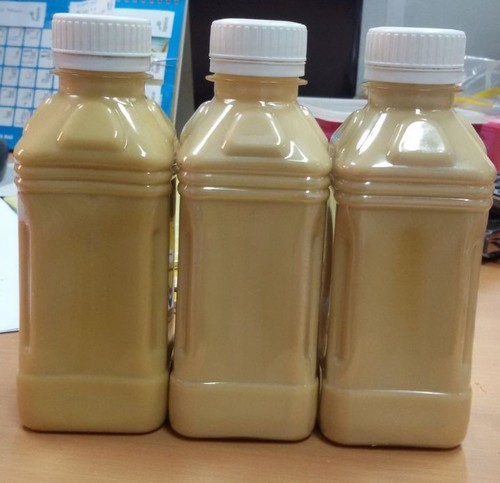

PFAD (Palm Fatty Acid Distillate)
750.00 USD ($)/Metric Ton
Product Details:
- HS Code 38231900
- Classification Organic Acids
- Grade Industrial Grade
- Application Industrial
- Click to View more
X
PFAD (Palm Fatty Acid Distillate) Price And Quantity
- 750.00 USD ($)/Metric Ton
- 1 Metric Ton
PFAD (Palm Fatty Acid Distillate) Product Specifications
- Industrial
- 38231900
- Industrial Grade
- Organic Acids
PFAD (Palm Fatty Acid Distillate) Trade Information
- Any Malaysian/Indonesian/Thailand ports
- 10000 Metric Ton Per Month
- 1 Months
- Yes
- Contact us for information regarding our sample policy
- Packing in Flexi bag, ISO Tank and Drums.
- Australia South America Western Europe Middle East Africa Central America Asia Eastern Europe North America
- All India
Product Description
Palm Fatty Acid Distillate (PFAD) is a byproduct obtained during the refining process of crude palm oil. It is a brownish, semi-solid material and is rich in free fatty acids. PFAD is produced by the distillation of crude palm oil under high temperatures and vacuum conditions, which helps to separate the lower boiling point free fatty acids from the oil.
The composition of PFAD typically includes various fatty acids such as palmitic acid, oleic acid, and linoleic acid. The exact composition can vary depending on the source and processing methods. Due to its high free fatty acid content, PFAD is not suitable for direct consumption as cooking oil or food ingredient. Instead, it is primarily used in the manufacturing of various industrial products and applications. Some common uses of Palm Fatty Acid Distillate include:
1. Soap production: PFAD is a valuable ingredient in soap manufacturing, especially for laundry soaps and laundry detergents.
2. Animal feed: It can be used as a feedstock for animal feed production, primarily for ruminant animals due to its high energy content.
3. Biodiesel production: PFAD can be converted into biodiesel through the process of transesterification. Biodiesel made from PFAD can serve as an alternative, renewable fuel source.
4. Oleochemicals: PFAD can be further processed to obtain various oleochemical products, such as fatty acids, fatty alcohols, and glycerol.
5. Industrial applications: PFAD is used in various industrial applications, such as in the production of lubricants, surfactants, and other chemical products.
FAQ:
Q: What is Palm Fatty Acid Distillate (PFAD)?
A: Palm Fatty Acid Distillate (PFAD) is a byproduct obtained during the refining process of crude palm oil. It is a brownish, semi-solid material with a high content of free fatty acids.
Q: How is PFAD produced?
A: PFAD is produced by the distillation of crude palm oil under high temperatures and vacuum conditions. This process helps to separate the lower boiling point free fatty acids from the oil.
Q: What is the composition of PFAD?
A: The composition of PFAD includes various fatty acids, such as palmitic acid, oleic acid, and linoleic acid. The exact composition may vary depending on the source and processing methods.
Q: What are the main uses of PFAD?
A: PFAD has various industrial applications, including soap production, animal feedstock, biodiesel production, oleochemicals, and use in industrial products like lubricants and surfactants.
Q: Is PFAD suitable for direct consumption as cooking oil?
A: No, PFAD is not suitable for direct consumption as cooking oil or food ingredient due to its high free fatty acid content.
Q: What is the significance of PFAD in soap manufacturing?
A: PFAD is a valuable ingredient in soap manufacturing, particularly for laundry soaps and laundry detergents.
Q: Can PFAD be used in animal feed?
A: Yes, PFAD can be used as a feedstock for animal feed production, particularly for ruminant animals, as it has a high energy content.
Q: How is PFAD utilized in biodiesel production?
A: PFAD can be converted into biodiesel through the process of transesterification, making it a potential source of alternative and renewable fuel.
Q: What are oleochemicals, and how is PFAD related to them?
A: Oleochemicals are chemicals derived from natural fats and oils. PFAD can be further processed to obtain various oleochemical products, such as fatty acids, fatty alcohols, and glycerol.
Q: What are the environmental concerns related to PFAD production and use?
A: The production and use of PFAD have raised environmental concerns, particularly due to the association with deforestation as palm oil plantations expand to meet global demand. Sustainable and responsible practices in the palm oil industry are being encouraged to mitigate these environmental impacts.
Q: Is PFAD a sustainable byproduct?
A: The sustainability of PFAD as a byproduct depends on the overall sustainability practices within the palm oil industry. Efforts are being made to promote sustainable practices, including responsible sourcing and reducing environmental impacts.
Enter Buying Requirement Details
 English
English Spanish
Spanish French
French German
German Italian
Italian Chinese (Simplified)
Chinese (Simplified) Japanese
Japanese Korean
Korean Arabic
Arabic Portuguese
Portuguese


